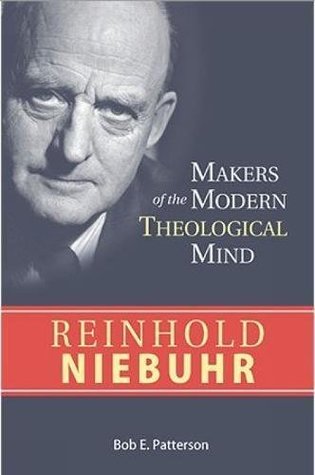
John Gerstner and the Renewal of Presbyterian and Reformed Evangelicalism in Modern America (Princeton Theological Monograph Series), Jeffrey S. McDonald. Eugene, OR: Pickwick Publications, 2017.
Summary: A biography of church historian, apologist, and theologian John Gerstner exploring his impact on theological education, the Presbyterian denominations of which he was part, and the wider evangelical and Reformed movement.
I heard John Gerstner speak over 50 years ago at the youth Bible Studies of the New Wilmington Missionary Conference. This gruff scholar spoke with passion about the parables. I cannot say I remember what he said, but it was clear that here was someone who was passionate about the Bible. Years later, I listened to him on tapes from the Ligonier Valley Study Center, arguing for the inerrancy of the Bible at a time this was an issue under much discussion. He was also a strong influence on two of the ministers of the church in which I grew up. I have to say I’ve not thought much about him since until reading this biography, which both impressed me with the reach and impact of his scholarship and underscored the journey away from an evangelical faith of the PCUSA, from which, late in life he resigned his membership.
The biography begins with some of the formative influences in his life: the UPCNA (United Presbyterian Church North America) church in which he grew up, one adhering to evangelical doctrine, his conversion and early formation at Philadelphia School of the Bible, his studies under John Orr at Westminster College, which persuaded him of the importance of rational, evidentialist apologetics. After a brief stint as a student at Pitt-Xenia Seminary, then associated with the UPCNA, he went to Westminster Seminary, still reflecting the influence of J. Gresham Machen, the modernist versus fundamentalist “Presbyterian Controversy,” where he was shaped by the Old Princeton theologians who had shaped Machen’s resistance to liberalism.
The subsequent chapters of the book trace Gerstner’s career by decades. The 1950’s witnessed his rise as an evangelical scholar, both at Pitt-Xenia and more broadly. He led a movement, along with Addison Leitch to renew the evangelical stance of the seminary. This was interrupted by the merger of the UPCNA with the United Presbyterian Church to form the UPCUSA. Gerstner opposed this merger on theological grounds, as well as the subsequent merger of Pitt-Xenia and Western Seminary, both in Pittsburgh, to form Pittsburgh Theological Seminary (PTS).
In short order, the moderates and liberals from Western asserted their influence at PTS. McDonald traces the disillusionment Gerstner felt when Leitch abandoned ship. Throughout the 1960’s, he continued to defend an evangelical faith, supporting a group of evangelical students, while continuing to work as “loyal opposition” within the denomination. Two cases in the 1970’s gave him pause, even as he advocated unsuccessfully in both instances. One was the Kenyon case, denying ordination to a pastor who did not believe in the ordination of women to church leadership positions and the other, the Kaseman case resulted in the ordination of a pastor who denied the full deity of Christ. For a time, Gerstner considered the denomination apostate.
As Gerstner failed his efforts to preserve orthodoxy within his denomination, his ministry broadened in other ways. He taught courses at Trinity Evangelical Divinity School, exposing a broader audience to Reformed thought. He spoke increasingly about his Jonathan Edwards scholarship contending for a direct line between Edwards and the Old Princeton Theology. And his teaching, particularly about biblical inerrancy spread widely through the influence of the International Council on Biblical Inerrancy and the Ligonier Valley Study Center, led by one of his former students and mentees, R.C. Sproul. Sproul championed Gerstner’s work and brought him to the attention of a much wider audience. One failure that marred his scholarship was his inability to transcribe the texts of Jonathan Edwards sermons as editor of for that volume of the Yale edition of Edwards’s works, resulting in his removal from the project in 1977. At least part of the issue was his inability to do the critical work necessary, given his high estimate of Edwards.
In the 1980’s, Gerstner retired from Pittsburgh Theological Seminary but spoke and lectured widely. Despite being removed from the Yale project, he brought attention to Edwards in a variety of settings and helped shape the growth of Presbyterian and Reformed evangelicalism in the newly formed Evangelical Presbyterian Church and the Presbyterian Church in America, joining the latter denomination in 1990. He kept up an intense schedule of teaching and also edited a three volume work on Jonathan Edwards. McDonald describes this as poorly edited and flawed in many ways but also offering many original insights into Edwards work.
I always pictured Gerstner as a theological pit bull. This biography offers a much more nuanced view. He was beloved as a teacher by many of his students and deeply shaped many including Sproul. It is clear that he was shaped by the aftermath of the fundamentalist-modernist controversies of the 1930’s and determined all his life to preserve the theological integrity of the church, a losing battle in his own denomination. What is striking from this biography is that he remained a faithful churchman and theologian in that denomination so long despite the losses, remaining the gentleman, even though he could be fierce in debate.
It strikes me that he was both teacher and apologist for an evangelical faith and one wonders what might have happened had he devoted, or been capable of devoting greater energy to his Edwards scholarship. Yet even so, he prepared the way for the resurgence of Edwards studies that we are seeing to the present day. Likewise, he offered theological sustenance to the newly formed Evangelical Presbyterian Church and the Presbyterian Church in America, two bodies that offset the decline in mainline Presbyterianism. McDonald’s biography offers a great service in remembering this distinctive voice who left his mark in so many Presbyterian and Reformed circles and in the wider evangelical community.


